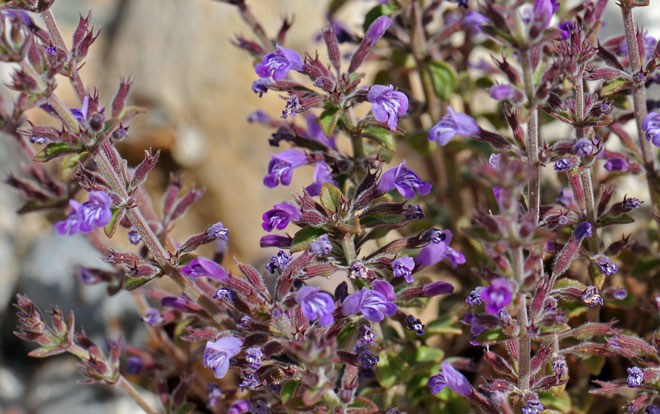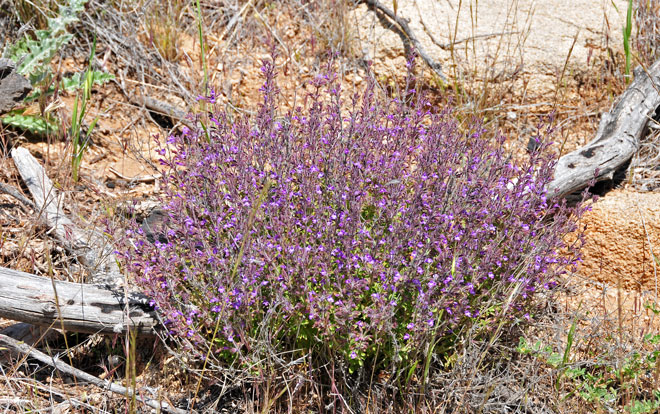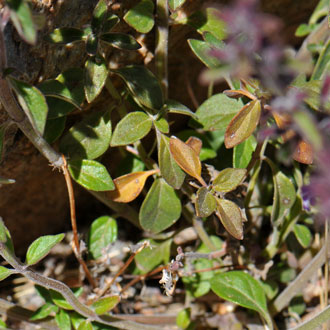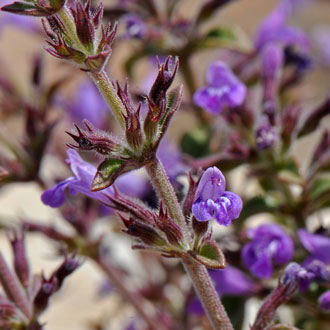Hedeoma nana, Dwarf False Pennyroyal





Scientific Name: Hedeoma nana
Common Name: Dwarf False Pennyroyal
Also Called: Dwarf Pennyroyal, False Pennyroyal, Falsepennyroyal, Mock-pennyroyal
Family: Lamiaceae or Mint Family
Synonyms: (Hedeoma nanum)
Status: Native
Duration: Annual perennial;
Size: Up to 10 inches more or less.
Growth Form: Forb/herb; stems covered with soft hairs (puberulous), multiple branching.
Leaves: Green, greenish-purple; simple, leaf shape variable, ovate to round.
Flower Color: Pink or purple with light pink or whitish blotches; flowers small but showy, flowers from axils, clusters of 2 to 5 flowers, short thin pedicel (see photo above), upper corolla is notched.
Flowering Season: March to October, California from May to June.
Elevation: 650 to 5,500 feet.
Habitat Preferences: Variable habitats, moist rocky or gravelly areas found in middle elevation forest.
Recorded Range: Dwarf False Pennyroyal is found in the southwest United States in AZ, CA,NM, NV, TX and UT. It is also native to Mexico. In Arizona it is found almost throughout the states in preferred habitats.
North America & Counties Distribution Map for Hedeoma nana.
U.S. Weed Information: No information available.
Invasive/Noxious Weed Information: No information available.
Wetland Indicator: No information available.
Threatened/Endangered Information: No information available.
Genus Information: 17 species in Hedeoma in North America. 8 species in Arizona, 4 species in California.
The Plant List includes 93 scientific plant names of species rank for the genus Hedeoma. Of these 44 are accepted species names.
3 sub-species of Hedeoma nana in the United States:
Hedeoma nana subsp. californica, California False Pennyroyal (AZ, CA, NV);
Hedeoma nana subsp. macrocalyx, Dwarf False Pennyroyal (AZ only);
Hedeoma nana subsp. nana, Dwarf False Pennyroyal (AZ, NM, NV, TX,UT)
The genus Hedeoma is also found in South America.
Comments: A decoction of Dwarf False Pennyroyal was plant taken for indigestion. See all ethno-botanical uses at Native American Ethnobotany, University of Michigan, Dearborn.

